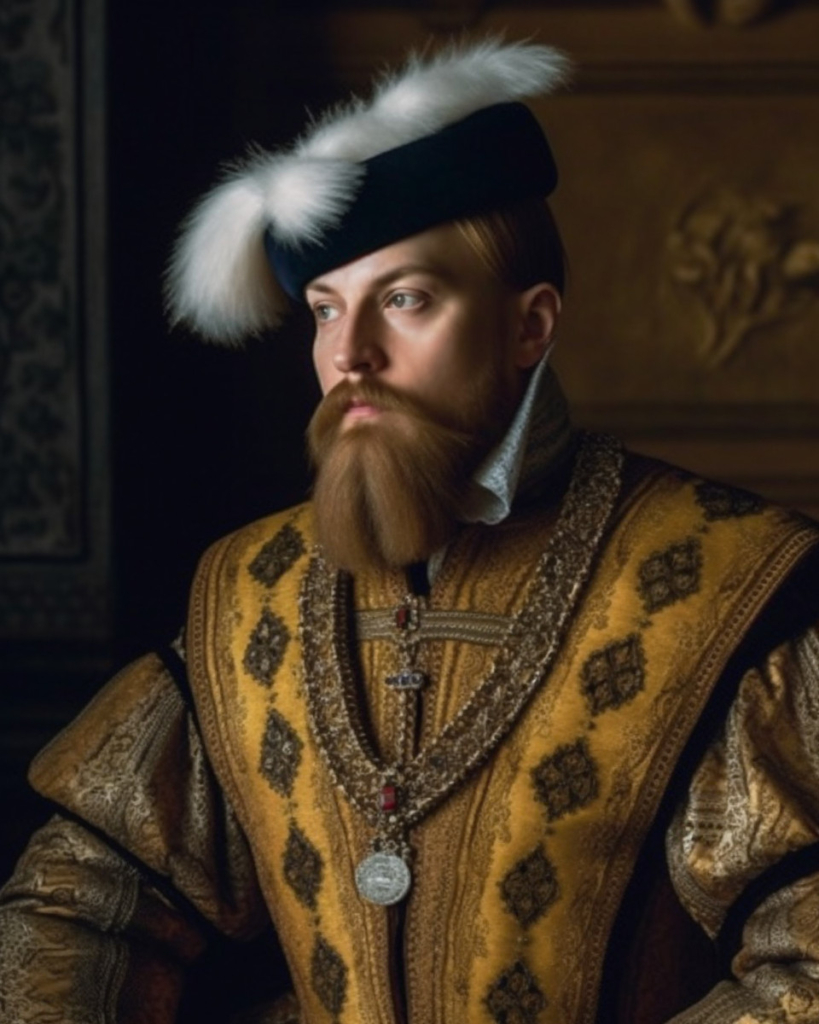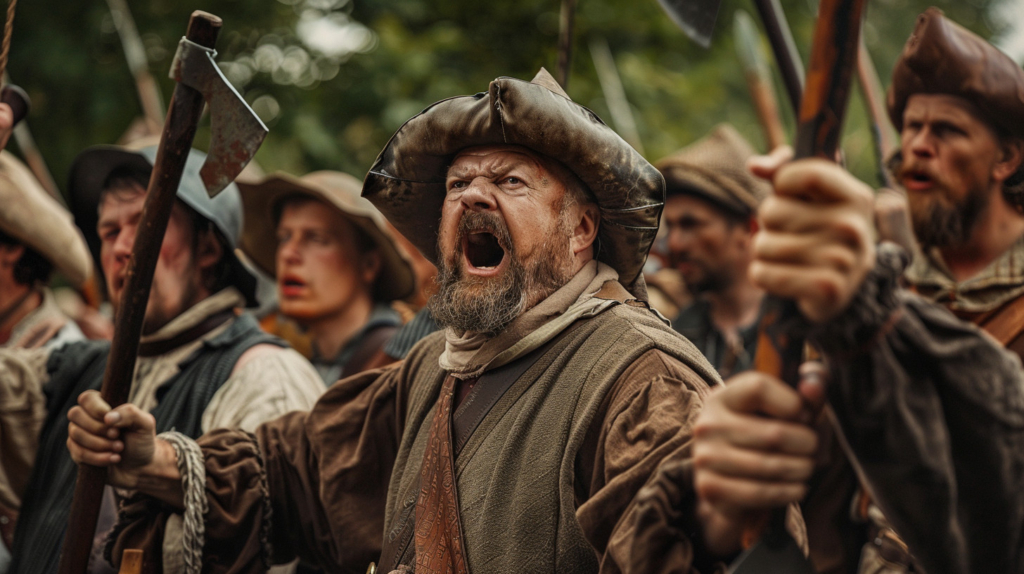Although peasants indeed had been a driving force – and the most important military force in Engelbrekt’s rebellion – noblemen had been involved and with time taken over the movement.
The first true peasants’ revolt in Swedish history is known as the Dacke War. The revolt was led and fought by peasants. Some priests did join, but both the leaders and the fighters in the war consisted of common people.
But what made them rebel? Let’s first take a quick look at what has happend in the north since we left it in the 1430s (read the previous posts about the Engelbrekt Rebellion).
The Union wars had finally ended when nobleman Gustav Vasa had wrenched Sweden from Danish control in the 1520s. The newly crowned king had thus started as a rebel himself. And many who had followed him had been peasants – but they received little reward for their efforts.

Gustav Vasa (above) ruled harshly, and he built up an administrative network to an extent not previously seen in Sweden. He raised taxes to pay for the loans he took during the war. And he converted to Protestanism to plunder the wealth of the churches.
All this led to dissatisfaction among the common people, who were barely getting by as was – and who were deeply Catholic. The robbing of the churches, and the changes such as the sermon being held in Swedish instead of Latin was partly to blame for the anger among the peasants.
And just like Engelbrekt’s rebellion a 100 years prior, one major factor was the brutal methods used by the bailiffs to collect the taxes.
In the 1530s, the people of Småland in southern Sweden had had enough. Bailiffs and their soldiers were repeatedly attacked and killed throughout the decade. However, there were no long-lasting or particularly successful rebellions, instead there were settlements with heavy fines for the insurgents.
Some of them managed to escape, either to Denmark where the taxes were a little less, or to the forest where they lived more or less as robbers.

In 1536 an extra harsh tax was imposed, and again people rose up and killed the bailiffs that tried to collect them. This time, Gustav Vasa pushed back harder. The instigators of the riots were executed, while most participants received heavy fines. But this did little to calm the situation – in fact it had rather the opposite effect.
Among the peasants that rose up in 1536 and killed a bailiff and his soldiers were a man who would become one of the most important rebel leaders of all time in Swedish history – Nils Dacke.
The first time he is mentioned in official sources is the same year when he was fined to pay 200 Danish marks for killing a bailiff.
Since Nils Dacke was instrumental in the rebellion that was to come, the next post will be about him. Who was this common man, who was able to rally the biggest peasant uprising in Swedish history?
Sources:
Adolfsson, Mats. Fogdemakt och bondevrede. Svenska uppror: 1500 – 1718. (2007)
Blom, Tomas. Dackefejden. Det stora upproret. (2019)

